Being immersed in the fitness industry provides me with a ton of different opportunities to experience different techniques, methodologies, and products. I recently had the privilege of a...
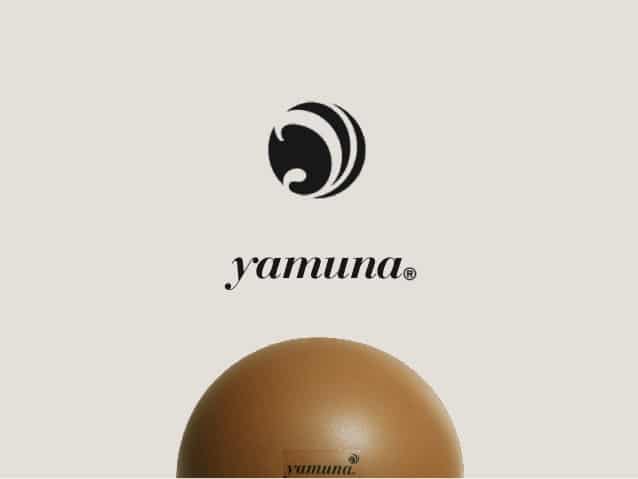

Being immersed in the fitness industry provides me with a ton of different opportunities to experience different techniques, methodologies, and products. I recently had the privilege of a...
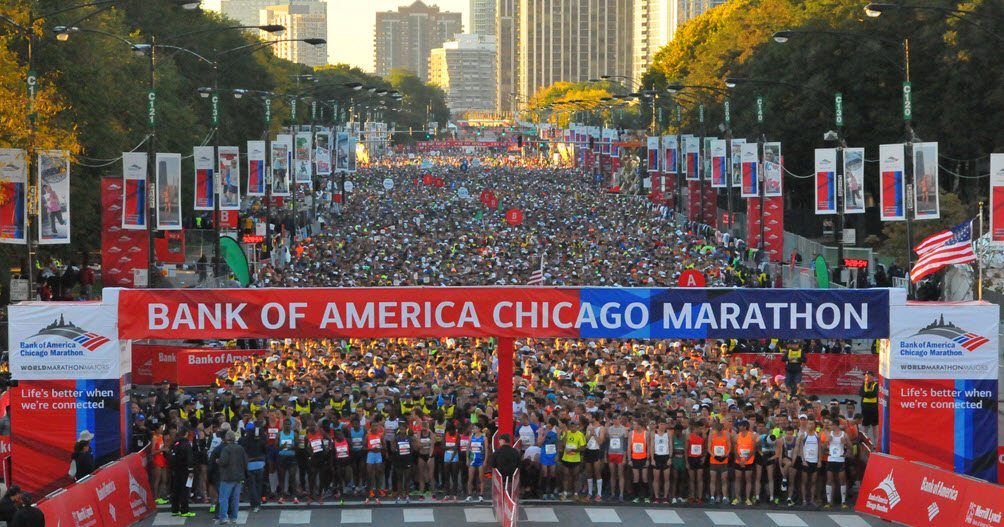
Leading up to the Chicago Marathon 2016 The Chicago Marathon provides an excellent course, plenty of support and, for me, a chance to visit home for a few days. It was no different for me this...

September 25 was going to be my day. The Ironman Augusta 70.3 triathlon was finally here. The race I had been training so hard for on one of my favorite courses. It was four-and-a-half months...
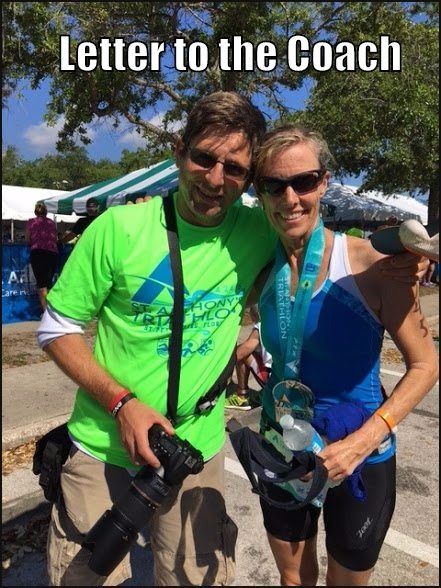
I have been an endurance coach for some time now. Once in a while, I receive an email from a client which chokes me up with pride. Today, I received one of those letters, so instead of sharing it...
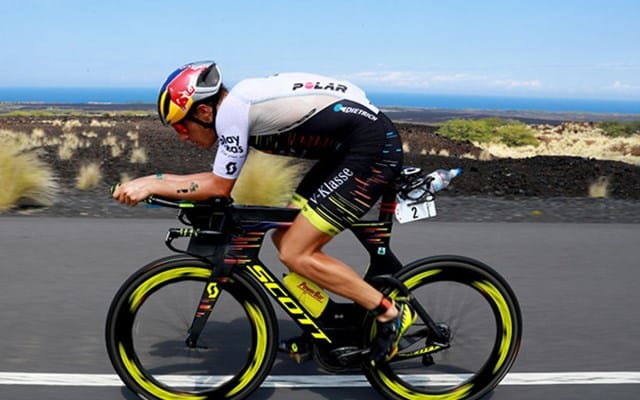
I found when looking for ways to get faster on the bike, is that there is so much information, from different coaches and experts, that it can be confusing and overwhelming. Personally, I...
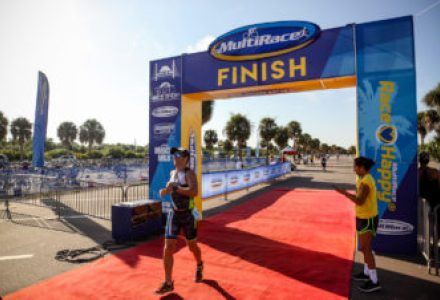
The previous post was a review of the FD3 Triathlon Series as if it was a product. Below you will find a more detailed account of my personal experiences during the race. Let me know in the...
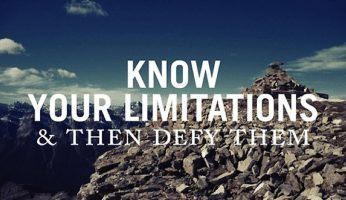
On Tuesdays and/or Thursdays, I will do my best to give one simple fitness, triathlon or running tip, trick or piece of information that will provide some value to in either helping you to become more efficient, prevent injury, increase performance, have more fun or at the minimum give a review of knowledge that might not have crossed your path in a some time.
I find myself observing other runners while running and sometimes just hanging out here in Tampa. Due to the weather here lending itself to year-round training, I have no shortage of material to choose from.
My coaching practice’s number one priority is form, technique and injury prevention, so I routinely use other runners, with my clients to reinforce the form training I have provided. (Sorry, Tampa runners. If you happen to pass by me with a client, most likely you have been observed and surveyed for comparative analysis.)
With all of my observations, the number one issue that I see are runners that sit in the bucket. Of course, the question most people ask is what does sitting in the bucket mean?
Basically, it’s when the glutes(or bum) are not in line with the torso. The body looks like an “L” from the torso to the hamstrings. Natural running which when learned is much easier, more efficient and greatly reduces impact on the joints. The torso hips, glutes and ankles form a straight line.
[table “2” not found /]
The interesting thing is, that running should be instinctual right? Unfortunately, not anymore. Sociological factors have played into our bodies to a point where most Americans, cannot just decide to take up running without going through periods of injury.
For example, sitting at a desk all day will tighten the hip flexors so that it becomes extremely difficult to push the hips under the torso. The same thing is evident for playing video games on the couch for long periods of time.
The figure on the left is actually still a lot better than I have noticed out and about. The torso is still tall and the chest is still has a little bit of lean to it causing forward motion. A lot of runners I notice, sit in the bucket and lean back. What is this doing? Basically, gravity is working against the runner. The objective is forward motion but the glutes and the torso are sitting back, so in essence, the body and gravity are working against itself.
Another perception you will see is the heel strike of the runner. When that heel strikes the ground the impact reverberates all the way from the ankle through the legs, spine, neck shoulders and head. This is where most of the injuries take place.
By simply starting to incorporate, tilting the hips under the torso and leaning from the ankles instead of the waste, the body will start allowing gravity to be used instead of the legs as the sole source of momentum. Suddenly, the feet are striking the ground underneath the center of gravity and only the calf down to the metatarsals absorb the majority of the impact from the ground.
I continue to instill in my clients, running is powered by the core, not the legs. Use gravity as momentum and allow the legs to just go for the ride. To remain consistent, the core must be strengthened and hip flexors stretched to keep the glutes from returning to the bucket.
There are many techniques to help modify the behavior to allow for an efficient, safe and effective change of form. All it takes it the will to want to change and get better and you will.
The #1 tip – get out of the bucket.
Are you running in the bucket?
Did this information shed some light on any area of your running that might be in need of improvement?
Carpe Vitam!
(Seize Life!)
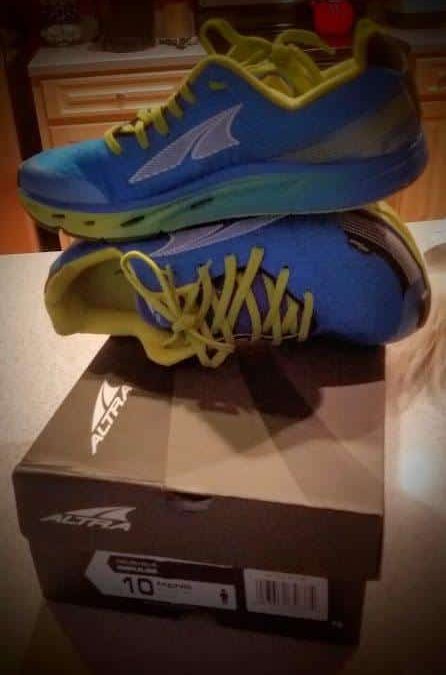

Are you seeing a pattern yet? Yes, I am becoming a huge fan of the 6 year-old running shoe company known as Altra. As I have been instructing clients in form techniques, and have found that most of the models Altra manufactures, lend themselves to my favorite principles.
The Altra Impulse is no different.
As with all of Altra’s models, my favorite advantage is their FootShape™ Toe Box. This is the incomparable wide toe box that Altra is known for. The toe box is makes any of Altra’s models recognizable from a good distance away. That is how wide it is. I enjoy the ability splay my toes and have my feet firmly hit the ground without them being cramped up. Wider toe boxes also allow the feet to develop more strength because the shoe is not tightening around the ball of the foot or the toes. The toes can move around, and tackle all kinds of terrain.
As you can see from the x-ray below, the amount of splay the toes are allowed in the Altra vs a traditional toe box. Imagine having access to the full splay of your foot while you run. What is amazing is that most runners do not even realize the limits that a traditional toe box causes. (Hmm, maybe there is an idea for a full post.)

The Altra Impulse is no different in this department. The FootShape™ toe box has been incorporated and has all the comforts of the other models I have run in.
I love the Zero Drop™ technology that Altra incorporates. When I run I have the ability  to utilize the full power and flexibility of my calf not to mention I can run as if I was barefoot, as our bodies were intended. Most traditional running shoes have a 12mm heel drop. This means that the heel is 12mm above the ball of the foot.
to utilize the full power and flexibility of my calf not to mention I can run as if I was barefoot, as our bodies were intended. Most traditional running shoes have a 12mm heel drop. This means that the heel is 12mm above the ball of the foot.
When we are barefoot, the heel and the ball of the foot are equal which is a Zero Drop™. This also helps with heel striking. Have you ever tried to heel strike while running barefoot? Even if you are a regular heel striker in shoes, it is almost impossible to heel strike while bare foot running. A huge effort has to be made to do that.
So, why runners continue to heel strike? If your heel is more cushioned in the shoe, then of course you will want to hit that area first. (Another post may be needed to explain a little more on this too…stay tuned.)
I love the Innerflex™ which are grooves at the bottom that create a more flexible sole.
One of the huge differences with the Altra Impulse is that they also incorporated their patented StabiliPod™ technology along side the Innerflex™. Now you have a stability shoe that is also somewhat flexible.
I have decided to put this feature as a liked feature more for others than myself. As a pure neutral runner I prefer to work allowing my body to support me, not my shoe, but Altra is marketing this shoe not only for running and triathlon, but for cross training as well.
The StabiliPod™ technology does really help in moving laterally, which is not something that is usual for runners, and especially those of us whom usually stick to the pavement. This is why I do like this feature.
 My absolute favorite feature of this shoe are the drainage holes in the sole. My very last test run with the impulse was an 8 mile run, immediately following a huge rain storm here in Tampa, Florida.
My absolute favorite feature of this shoe are the drainage holes in the sole. My very last test run with the impulse was an 8 mile run, immediately following a huge rain storm here in Tampa, Florida.
My route took me through numerous ankle deep puddles and while my socks remained damp, the shoe was clear of water within a few yards of the puddle. There was no squish from the sole of the shoe or my sock because as my foot pushed down on the shoe, the holes squeezed water out the holes. No more blisters from soaked uppers and water log socks release water as well.
The Altra Impulse also continues with Altra’s A-Bound™/EVA blend compound which sits directly under the foot and adds a return of energy and reduces ground impact.
The upper is a light material and does have a noticeable difference from the other models. The tongue and laces are curved with the shape of the shoe which differs from the straight tongue of traditional running shoes.

I actually enjoyed this new feature. The fit of the shoe felt more comfortable with the tongue falling in the same curve as my foot.
I rarely run without socks, but I did end up having to do go out for a couple of miles one day without socks, and they were extremely comfortable. While the upper is not seamless it is very close. There are only a couple of seems that surround the tongue, but they are covered with a light fabric that helps reduce any friction.
This is probably a very individual issue, but even though I sized up to a 10 from a 9 and a-half, after a few miles my toes still ended up moving forward till I they hit the front of the shoe. This probably has to do with the fact that I only lace my shoes tight enough to lock in my heel.
If you like your shoes laced up tight this probably will not be an issue.
The price point for the Altra Impulse is $120 dollars, which while competitive in the market place it still is a little expensive. In this day and age where people are scrounging for liquidity, I really would like to see at least one company come out with a quality shoe that retails for under $80. Of course that is my opinion and my opinion only.
Quality – 4/5
Upper – 5/5
Outsole – 5/5
Flexibility – 4/5
Comfort –5/5
Appearance – 4/5
Cost – 3/5
Have you ever run in an Altra Running Shoe?
What were your experiences?
Which model do you like best?
Carpe Vitam!
(Seize Life!)
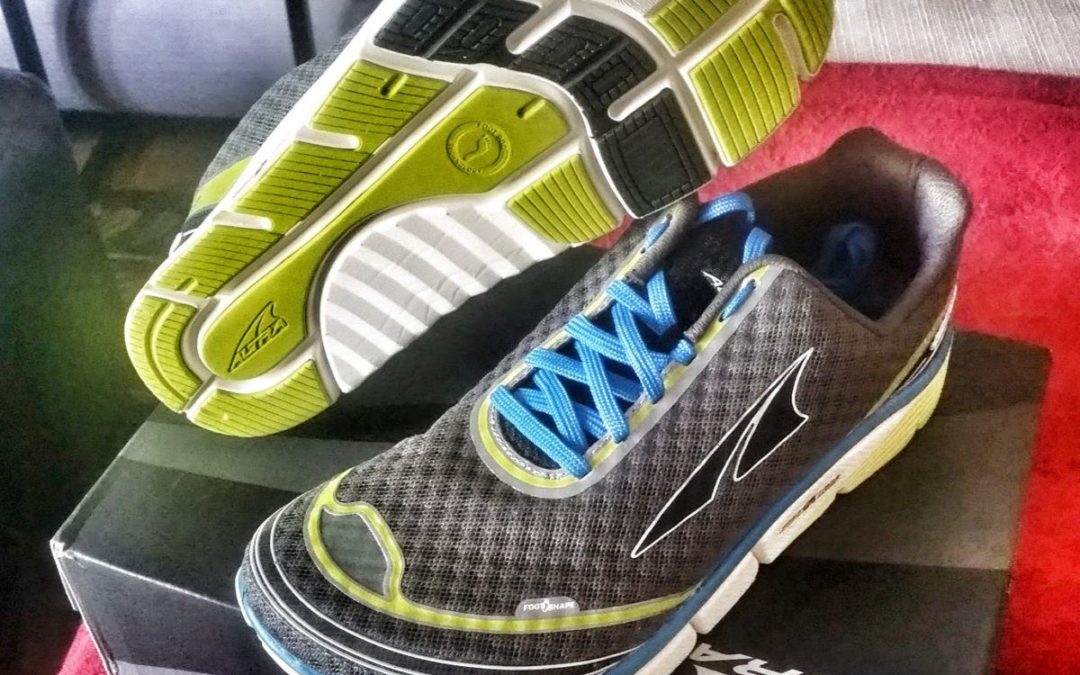
I have been a fan of the Altra line for a little while now, so I was so honored to be given a chance to review the brand new Altra Torin 2. I reviewed the 1.5 version when it first arrived, and it became my shoe of choice for long runs.
One of Altra’s significant differences in the complete line of shoes is their zero heel drop and since my coaching methodology includes an emphasis on our body’s natural movement while running this is obviously one of my favorites. (I have included a explanation of what “Zero Drop” means in my previous Altra Torin 1.5 review.)
The other difference between Altra and their competition is the wide toe box, or as Altra calls it, a “FootShape” toe box. The ability to splay the toes plays a significant role in injury prevention and the strength of the feet. This allows the runners body to support itself, rather tan relying on a shoe for support.
The upper has been improved in the 2.0. The Torin 1.5 was made with a thick upper which added unnecessary weight and reduced flexibility of the shoe. The 2.0 has been upgraded with a much thinner mesh material that breathes better and allows for more flexibility.
Here is where some of my favorite changes were made. First, they moved from the heavier EVA to their lighter proprietary “A-bound” material that for me seems to add a little more spring to the ride of the shoe. When my foot strikes the ground the material seems to not only protect from the natural impact, but reacts driving me forward.
The weight in the previous show was 10.1 ounces which was up from the original Torin which was 9.5 ounces. The Torin 2 comes in at 9.1 ounces which is one of the lightest in this category, if not the very lightest.
Altra added what they call Innerflex which are groves in the outsole and midsole that bend with your foot allowing substantially more flexibility than the previous models. This too me was the single most important change they made. The Torin has always classified as their High Cushioned shoe which most companies have traded flexibility for cushion. Altra has found a way to give runners the flexibility I love with the cushioning I want and without giving up any of proprioception.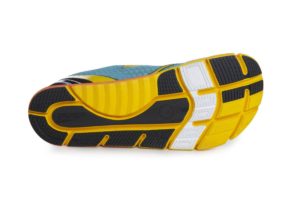
The have now included a Foot Pod technology which maps the bones of the foot with the Innerflex so the shoes flexes where the runner needs it to, allowing a near customized fit.
Altra went ahead and removed the toe guard and heel rudder as well. In my opinion this not only allowed them to shed some weight, but also added to flexibility and comfort. In a road shoe I never really thought either added any value. These two advantages are best left for trail specific designs.
Obviously, not much.
The new Abound foam tends to soak in water and sweat which makes the shoe feel a little heavier during training and racing. Even with the mesh material the shoe does not seem to drain well. I would love to see a version of this shoe with drain holes, but of course that is the triathlete in me talking.
After about forty miles the new Abound material started to squeak while just walking ,and only in my left shoe This does not seem to happen when I run in them, but it is a little noisy when walking through the store. I think it may be just a problem with this pair, but nonetheless it is something I dislike. However, it did not change the performance of the shoe.
The price of $125 is a little high in my opinion. A better price point would be the $100 – $110, but of course that is very minor for shoe of this quality.
Let’s see how the Torin 2 ranked on my scale:
Quality – 4/5
Upper – 4/5
Outsole – 4/5
Flexibility – 5/5
Comfort – 5/5
Appearance – 4/5
The Altra Torin 2 is available in men’s whole and half sizes 7-12.5, whole sizes 13-15 and in three color patterns. It is available in women’s whole and half sizes 5-10.5, whole sizes 11-12 and in three separate color patterns.
Please feel free to comment on your feedback.
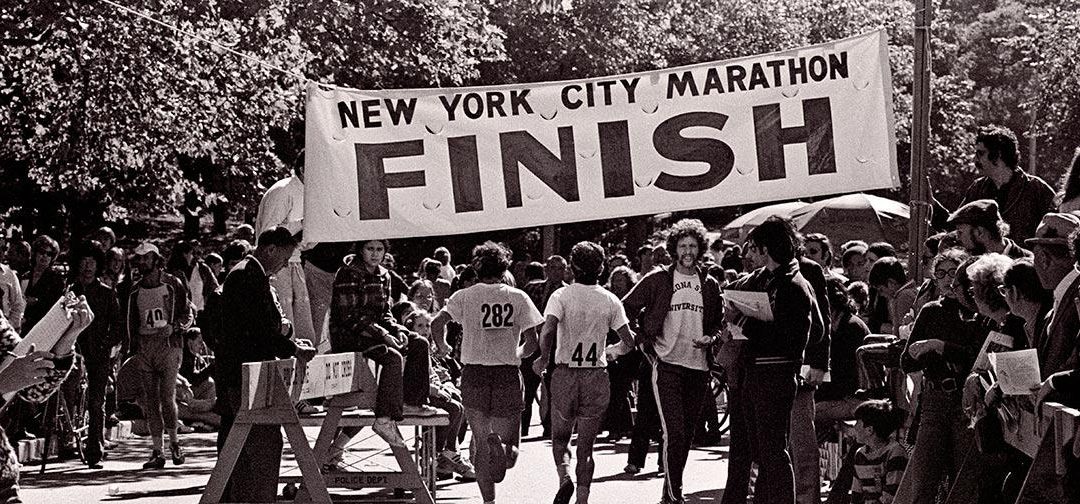
It’s been a couple of weeks since I have been back from the NYC Marathon, a couple of weeks since my last post and worse yet, almost a year since my last race recap, so I guess it’s about time I write one.
The NYC Marathon is probably one of the hardest races to compete in. There are three choices:
Entering the lottery used to include a clause that stated if you applied for the lottery three years in a row and did not receive an entry you automatically were granted a slot to run on the fourth year. That is how I was able to run it. As of last year that option no longer exists, so entering the lottery gives the same odds every year.
For me, in the 40-44 age group I would need to run a 3:10 marathon in order to receive guaranteed entry in the following NYC Marathon. That is a 7:15 min/mile average pace. It makes me tired just thinking about it. By the way, to get into Boston I have to run a 3:15, which is a 7:26 min/mile pace.
Flying up to NYC 10 times in a year would be awesome if my financial status were higher, so that is not a reality either.
Barring any increases in speed, luck or wealth, this might have been my only chance to run this race, so I gratefully took it. No matter how cold it ended up being.
Ok enough whining. Obviously, I enjoyed myself, otherwise I wouldn’t be so upset about getting in again. LOL!
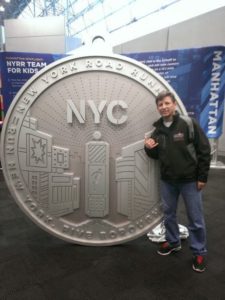
With 75,000 entries in the NYC Marathon, the organization of this race had to be run like a well-oiled machine and it was. I ended up visiting the expo twice. Once on Friday when I arrived, and once on Saturday when old friend, Dom Forth, flew in from San Francisco.
Both of my experiences were the same. A crowd of runners picking up their bib packets and t-shirts and then milling around the vendor area.
Interesting enough, I never spent more than a few minutes in any line anywhere. There were plenty of booths setup for packet pickup and plenty of help to retrieve t-shirts. Shocking right? I was pretty surprised myself.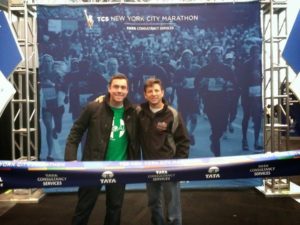
The rest of the NYC Marathon expo was what one would expect. All the major brands, charities and races with the exception there were a lot more international marathons presented. I had no idea there was a Jerusalem Marathon, but I do now and I am putting it on my bucket list. Just as soon as I finish the Super Six (Chicago, NYC, Boston, London, Berlin & Tokyo). Two down, four to go.
Logistics are interesting when it comes to races aren’t they? Most races, whether they be road races or triathlons, seem to start right around the 7am mark. Disney starts their races at 5:30am on Marathon Weekend which is really early and also means that people are getting to the race around 4am. Not the NYC Marathon. I was assigned to the first wave which started at 9:40am, but did that mean I could sleep in? No such luck, I had to be on the Staten Island Ferry by 5:45am.
Within three minutes of departing the Hilton Garden Hotel I was was riding in a taxicab to the ferry launch, which was lucky because at the time the mercury was dipping below 40 degrees. I am usually optimistic about walking in New York City, but at 5:00 am on a briskly cold morning like this one, I was glad to be riding in a heated cab with Morrie. He was extremely jubilant for a New Yorker at this time in the morning, which proctored him to give me a history lesson about the marathon on our 20 minute excursion. Most people might have been a little annoyed by Morrie’s rants about the last 30 races, but I actually savored the distraction and I learned a few things in that time as well.
Walking into the building that provided shelter from the launch, the aroma of coffee and baked goods overwhelmed me. At this time, all I wanted was a hot cup of coffee and with vendors lining the sides of the train station like benches, I had my choice. I chose the shortest line and within a few minutes had a large cup of liquid paradise warming my hands.
Dom and his friend Ryan, walked in about 5:45 just as the first ferry was leaving, but as the schedule for the morning had transportation running every 15 minutes, we were able to immediately board the next one departing at 6 am.
The ferry was warm, very clean and incredibly smooth as it cut through the Hudson River. It provided a chance to relax and swap stories with Ryan in order to get to know him a little. This was Ryan’s first marathon. He received a guaranteed entry from his 9+1 option. It made it a little easier for him since he lives in Brooklyn.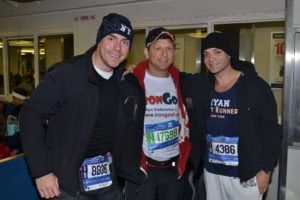
Once we reached the exit launch, we were ushered, very orderly, off the ferry and onto a line of coach buses for a quick trip to the race villages.
In order to accommodate over 70,000 runners, the NYC Marathon organizers divided up the participants into waves, colors and corrals. For instance, I was Wave 1, green, corral E, which meant I was a 9:40 am start, in the green village in the very last corral. To tell you the truth I was just happy to be in the first wave. The last wave was going to be starting close to 11:00 am which meant the average runner wouldn’t be even thinking about the finish line until around 3:15 – 3:30.
The villages were spread out, so once departing the bus and getting through a security pat down it was still a half mile walk to the green village. Dom, Ryan and I said our good-byes, and they headed off to the blue village as I set out to find green.
The Green village was in a unique location as the Verazzano bridge was literally above us. “Village” in this instance is actually defined as a gated off area for runners to loiter while waiting on the race start. The amenities included, UPS trucks to drop our baggage for after the race, Dunkin Doughnut tents that provided hot coffee and hot water for tea or hot chocolate, food tents that provided granola bars, bananas, bagels and other goodies, and of course portlets.
It’s 7 am, I am checked into my NYC Marathon village, I have had one cup of coffee, I am holding another, I am freezing and I still have two-hours and forty minutes until the start of the race. Here is where my frustration kicked in. In order to stay warm, I would usually want to move around, but I have 26.2 miles to run, so I want to stay off my feet. This means sitting down and being stagnant, which also means remaining cold.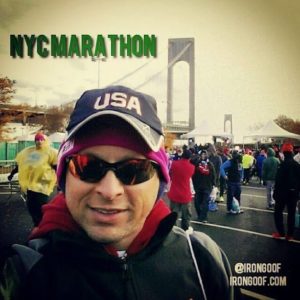
I chose to find a place in the sun, with my back against the wind in order to stay off my feet. My marathon schedule has me participating in at least 6 marathons separated by only 2-3 weeks since Chicago, three weeks prior, so this journey is not about time but about finishing injury free. Therefore, I choose to shiver instead of stay on my feet. Experience dictates, that I will probably be standing for a period of time while waiting for the official start.
It was an hour and thirty minutes of chatting with a lot of other runners before the announcement came over that wave 1 needed to in the corrals by 8:55, so it was one last trip to the portlet, and the UPS truck before I headed to my official NYC Marathon corral.
Due to the amount of people in the corrals it was definitely a little warmer, even after I dropped a layer of clothes. I had a chance to meet another set of runners and we chatted about the cold, the route and other marathon experiences when off in the distance we heard the National Anthem being sung. This is the point where I start to get amped up a little. An association had been made in my head ever since my first race, that started my heart racing, my blood pumping and my anticubital areas start to sweat. I actually really enjoy the feeling.
As we started to move forward, I could see the first part of the wave running up the ramp of the Verzanno bridge, and my excitement just kept building and before I knew it, I crossed the starting mat and I was off and running.
I grew up in Chicago, with blisteringly cold winters and dealing with drastic changes in climate. However, after being in Florida for nine years, my blood has definitely thinned. While most of the other runners had shed their homeless charity layer of clothes, I decided to keep my hoodie and pants on a little longer. For me it was the right decision because the 35 mile-an-hour winds provided enough of a cool breeze to keep me from warming up. It also pushed me into the for wall. I was literally running in a diagonal from the speed and power of the wind. The thoughts popping into my head of the whole race feeling this cold was not boding well for my optimism.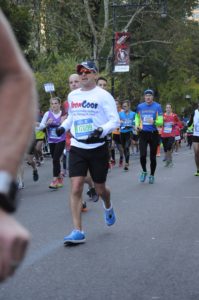
Running off the bridge into Brooklyn, helped a lot. Buildings and underpasses blocked the wind to a point where by mile three I shed my pants and sweatshirt, so I was left with a long sleeve t-shirt, shorts, hat and gloves. At this point I was warm enough to be comfortable.
At mile four I noticed a Team RWB shirt ahead of me. Being the social creature I am, I started a conversation. Jaime, is a member of the Air Force Reserve and a civilian contractor to the Department of Defense and a good runner. We ended up keeping each other company until the last 5 miles and it made a huge difference.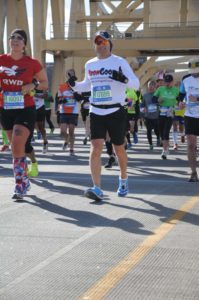
Wind gusts continued to haunt us throughout the race. I knew as long as I kept running I would stay warm and keep the blood flowing through my legs.
Around mile 15 I noticed the Queensboro bridge coming. I was warned about this portion of the race as the bridge. It is over a mile long and seems to go forever. Personally, I didn’t feel that way. Maybe because we ran on the lower portion of the bridge and it sheltered us a little from the cold and the huge welcome we received in Queens as we ran out of it. The area was packed with spectators cheering their lungs out. I couldn’t help but let a smile creep on my face. My pace quickened and the adrenaline started to kick in.
Running on First Avenue toward the Bronx held areas with different densities of spectators. It was reasonably flat until we reached the Willis Ave Bridge crossing over into the Bronx. It was not even close to being like the Queensboro or the Verzanno bridge, but it did change the elevation. Since it was at mile 20, my legs were shouting at me to stop. Honestly, I did end up walking a bit over the Madison Ave bridge. My quadriceps and hamstrings were getting extremely tight, so I ended up falling into a walk/run pattern. Nothing specific, but things were starting to hurt. 
At mile 22, along 5th Ave I was just trying to run more than walk. By mile 24, as we entered Central Park, my adrenaline kicked in for the last time. No matter how much it hurt I was running until I crossed the finish line.
I started to counting down the tenths of miles and just kept running. It was not a surprise when my watch said 26.2 miles that the finish line wasn’t even in site. After 4 hours and 6 minutes of running I finally crossed the NYC Marathon finish line and received my medal. It was not my finest or fastest marathon, but I will never forget the experience.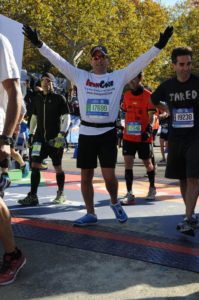
Unfortunately, my NYC Marathon journey was not over. Volunteers were quickly ushering me out of the finish area. I grabbed water,chocolate milk, a banana, swag and headed to retrieve my gear bag. It was ONLY another, what felt like, 2 miles until I found the UPS truck where my gear was stowed. This was north of the finish line and I had to go south to get back to my hotel. I was freezing. My legs were completely wrecked and though other runners were putting on warm clothes, volunteers kept ushering me out. I changed into a dry shirt and jacket before leaving the park around 86th street, only to find transportation was not readily available.
Every taxi was full, and the only way to get back downtown from the park was by rickshaw. At a cost $40 + $3 a mile? No way. I kept walking but the pain was getting really bad and I could barely bend my legs. Finally, I reached Broadway and 59th and jumped on a subway. Before I knew it I was back at the hotel and ready to take a shower.
Yet, the adventure continues. I paid $50 for an extra couple of hours in the hotel to get a shower and pack up. Unfortunately, I had already exceeded. Now my key didn’t work and I had to fight to get them to let me into the room.
Obviously, I was slow, because, well, I just ran a marathon. It wasn’t even 5 minutes, that I was back in my room, that the phone rang. It was housekeeping asking when I was going to be leaving. Even after I mentioned I paid for the extra time and received permission by the manager, I kept getting harassed. Not the finest moment for Hilton.
After 45 years of of the NYC Marathon, shouldn’t the hotels have packages for people leaving on race day? They must know the race doesn’t even start until 9:30am with the average participant taking 4 hours and 17 minutes. Lesson learned – stay until Monday. It is worth the extra money.
It was definitely, a worthwhile experience. I was happy with my performance. I met some really awesome people. Most of all, I was finally was able to run the NYC Marathon after 4 years of waiting.
Carpe Vitam!

Here it is again, a long time since my last post. Life happens and when it does, watch out. It can really mess up the things you want to do versus the things you must do. I am learning to prioritize what is absolutely important to me versus what is important to everyone else. I hope to soon have that under control, but I digress.
Newton was nice enough to send me both a pair of the Newton Energy and the BOCO. I am reviewing them together since I have found they are the same shoe with the only difference being the BOCO has a tread that is made for the trails and the Energy is made for the road.
To be transparent and honest, I am a certified Newton Coach, so I am a little biased towards Newton. However, I rarely train in Newtons, as running is very personal I have my favorite running shoes to train in.
I do however, love the methodology behind them. For those that do not know, Newton running shoes have 5 lugs in the front of the shoe directly under the ball of the foot. The lugs have a higher or lower profile depending on the shoe.
The lugs serve as a reminder for running form by automatically driving the foot to land on the fore or mid foot, reducing the impact dramatically.
When paired with Newton Natural Run training, the shoe will decrease the effort level of transitioning to a mid or forefoot runner.
In my experience, after the runner has developed the habit, they no longer need to be running in Newtons, but most do not only due to muscle memory, but they also last about 4 times longer than other running shoes.
Prior to the release of the Energy, the core products Newton produced were the Motion, the Isaac, the Gravity and the Distance. These models needed a transition period for the runner to get used to the way the lugs lifted the heel causing some calf soreness.
The Energy now has a lower profile of lug, and a transition plate which actually allows the athlete very tiny transition period, if any, before the comfort of the shoe settles in.
The EVA foam that makes up the sole of the shoe is extremely comfortable and highly accommodating to the road.
The only conflicts I have heard is the heel cup is a little shallow for some, causing some slippage during long runs.
Since one of the core beliefs of natural runners is that shoes should be tied just tight enough to secure the heel, this could be a problem. I have always taught, the athlete needs nothing to support but themselves.
In other words, if the shoe is tied too tight, the shoe ends up supporting the runner. By tying the shoes very light and only tight enough to secure the heel, the feet, the calves, the ankles are strengthened with every activity.
I personally have not found an issue with the heel cup even without the help of a runner’s lace, but I have heard of the issues.
I did get an eleven-mile run on the trails with the Newton BOCO and was I surprised at how well the tread grabbed the terrain. 
The trails I was running were meant for Mountain Bikes and that meant steep climbs and steep downhills and there was not a moment I did not feel secure.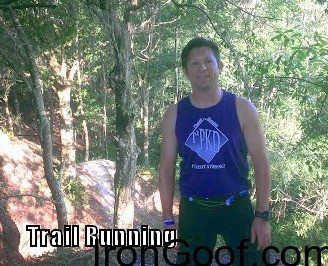
For new runners or for athletes transitioning to more efficient technique, I believe the Energy is the perfect shoe. They are the perfect shoe to transition with before trying one of the core Newton models.
The BOCO is a great trail shoe for anyone wishing to start or continuing a journey into trail running. They are comfortable, supportive and made me feel completely secure on the trails.
That’s my opinion and I am sticking with it. Happy Running!

In our last episode (I always wanted to say that), I mentioned the mistakes I made with the Sarasota Half Marathon. I usually would never have a client race two weekends in a row and to tell you the truth I had no intention of racing either, but I did had a client who was supposedly running the Florida Beach Half Marathon as a training run, so my plan was to go and support.
At least, that is what I told myself the night before, but when the alarm went off and I found myself wide awake, I thought to myself.
“Self, I would really like to run today, but I want to support my client.”
“Brad, why don’t you just run with him. He is supposed to do an easy aerobic run anyway.”
“You know, Self, that isn’t a bad idea.” I then proceeded to get up, get dressed and head out the door.
Except for the long wait to park, it was pretty smooth sailing. I was able to sign-up, go back to the car and drop my SWAG and head back to the start.
I was also lucky enough to see Jessica Crate and Jessica Perez, my business partners, out there as well which only inspired me more. (More on the business thing in another post.)
I found my client, and another friend from TeamRWB, at the start and we decided on a 8:45 to 9 minute/mile pace. He had just finished the first two weeks of a grueling strength phase, so I wanted to make sure that this was just going to be a nice easy run. Right.
We started out and the energy took us, but I have to say we were talking the whole way. Even though I kept trying to slow us down, we couldn’t seem to run over an 8:30 pace.

As the miles went by I kept re-assessing, the pace and how we were feeling. The thing was, we were both talking comfortably without straining.
It was a little overcast and the temperature wasn’t bad, but the humidity was pretty high, so I just thought we will keep going and the minute the effort seems to increase we will slow down.
I accepted the fact, that maybe this was just our pace for the day.
Ft. Desoto while still a beach and it was a road I had been on many many times while training was beautiful that morning.
There were well over 2500 people racing and everyone seemed to be having a great time, so I felt lets just see how far this pace will take us.
The first ten miles we ended up averaging around 8:25 and we conversed the whole way, but then we passed the 10 mile mark, meaning there was only a 5k to go.
I think we both instinctively picked up the pace. He blamed me and I blamed him, but I think it was mutual.
We took the next three miles with negative splits, well under 7:50s. When the last 400 came up I took off and while I still felt fatigued, I had it in me.
We crossed 1:50 just a few seconds from each other. I had to cross first, right? I mean while I pledge myself as a triathlon coach, but I am a run coach first, so I had to set the example.
(I know it isn’t going to happen when I start training my Olympic athlete later this summer. For her I am going to have to ride a bike during road runs.)
I have to say, that it was a much more enjoyable race than Sarasota on the performance end. Could I have run faster? Yes, but even though it was an aerobic run, I beat my race time from the week before.
My client mentioned that he felt great on the run as well, and he was only 3 minutes off his PR.
Lesson learned and applied – Start easy and remain consistent. If the energy is available, start negative splits the last 5k. That is what seems to work for me.
~IronGoof